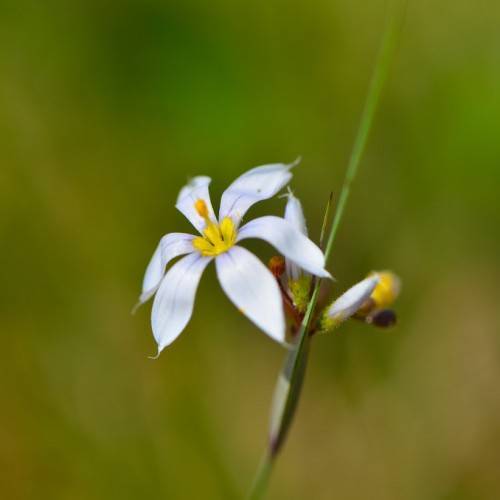
prairie blue-eyed grass
Sisyrinchium campestre
Cycle:
Herbaceous Perennial
Watering:
Average
Hardiness Zone:
2 - 8
Flowers:
Flowers
Sun:
Full sun
Leaf:
Yes
Growth Rate:
Low
Maintenance:
Low
Drought Tolerant:
Yes
Salt Tolerant:
Yes
Care Level:
Medium
watering
Prairie blue-eyed grass requires regular watering. During periods of dryness, it should be watered about once a week. However, be careful not to overwater it. When you water it, water until the soil is damp but not soggy, and then allow it to dry out before watering again. In hot weather, extra water may be needed to prevent the plant from wilting. Water in the morning or when temperatures are the mildest.
sunlight
Prairie blue-eyed grass typically prefers full sun exposure and does best with at least 6 hours of direct sunlight each day. The plant may tolerate some light shade, but will be less robust and produce fewer flowers if it does not receive enough direct sunlight. Since the plant is native to prairies, it will likely grow best under the summer sun it is naturally accustomed to. Depending on its location, it may even need to be protected from the strongest rays of the afternoon sun. Prairie blue-eyed grass should benefit from a period of morning light, typically from 8am to 11am, followed by a period of partial shade for the remainder of the day.
pruning
For best results, prairie blue-eyed grass should be pruned annually in the late spring or early summer, around the time when flowering has finished. This species should be trimmed carefully, removing any dried out or yellowed foliage, deadheading spent flowers, and thinning overcrowded clumps. Regularly removing the older, leggy foliage also encourages the production of new, more compact growth. Take care not to over-prune, as doing so may weaken the plant or reduce flowering in subsequent seasons.
